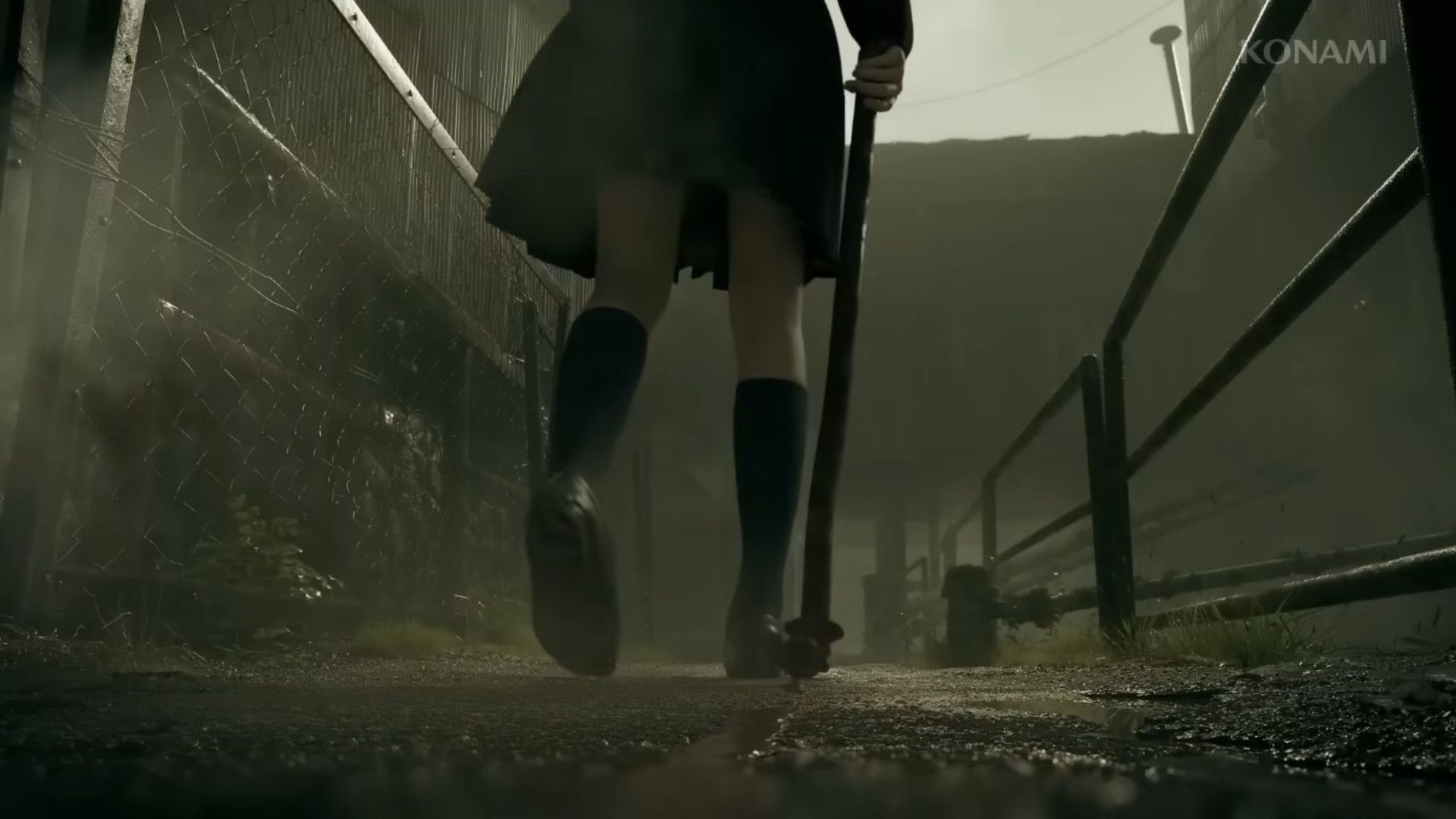There’s plenty to love about Silent Hill f, from its cerebral narrative, to its psychedelic nightmare presentation, to its arresting Akira Yamaoka soundtrack. But one of the game’s more surprising achievements is its melee combat, which deserves its share of praise. Remarkably, it’s rather similar to the combat of Silent Hill 2 Remake, which is actually one of that game’s weaker elements.
Indeed, 2024’s Silent Hill 2 has a lot of strengths, but melee combat isn’t one of them. It’s not broken or overtly frustrating, but it suffers from the same mechanical shortcomings of a game like The Callisto Protocol: combat plays out more like a quicktime event than a complex or deep gameplay experience. There’s no real need to put much thought into the position or timing of an attack, and the consequences for misjudging a swing of a pipe or plank are miniscule. There are no combos, buffs, or anything else to make melee combat anything more than a button-mashing affair, best used for ammo preservation and little else. Silent Hill f, on the other hand, is much more intentional with its combat design, and it manages this through only a few small changes and new features, relative to Silent Hill 2.
Silent Hill f has no gunplay, only melee combat.
Silent Hill f's Combat Is Like Silent Hill 2 Remake's, but Better
Stamina, Sanity, Items, and Counters Make Silent Hill f a Blast
Combat usually isn’t a top priority for survival horror. At the very least, it’s often viewed as tertiary to storytelling, atmosphere, and overall fear-factor. As such, expectations for Silent Hill f‘s combat were low, and while the final product doesn’t hold a candle to a dyed-in-the-wool action game or a more action-oriented horror game like Dead Space, it’s still remarkably effective.
Like Silent Hill 2 Remake, Silent Hill f‘s melee combat is more animation-driven than hitbox-driven. In other words, landing or taking a hit is more a matter of an animation sequence completing at the right distance, than about a unique attack making contact with the relevant hitbox. But while this makes Silent Hill 2 Remake‘s combat feel on-rails, Silent Hill f manages to deepen the process through an assortment of smart, impactful mechanics, the most significant of which include:
- Stamina (drained when attacking, dodging, and sprinting)
- Weapon durability and repair kits
- Items
- Counters
- Sanity & Focus
With the addition of something as simple and pedestrian as a stamina system, Silent Hill f‘s combat becomes immeasurably more intense. Players have to be cautious when making their attack, but also not hesitate, because every opportunity to deal damage is fleeting. In other words, hits count for much more when they cost a resource. Similar praise can be granted to the weapon durability system. It’s obviously not for everyone, but it elevates a very tangible sense of danger and consequence during battles, making retreat seem like a valid—or the only—option in many cases. This also ties into the item economy, which is surprisingly important for success.
Restorative items are littered around Silent Hill f‘s map, used to replenish health, stamina, or sanity, the game’s third major combat resource. Thus, combat becomes a careful game of resource management: players will be more likely to attempt a risky Focus Attack if they have more sanity, or a stamina-gorging heavy attack if they have a stamina-fortifying item. Like the other combat features, this is a rather straightforward mechanical inclusion, but it deepens Silent Hill f‘s gameplay nonetheless. All of these factors, combined with counter-attacks that encourage learning enemy attack patterns, make Silent Hill f‘s melee considerably more captivating than Silent Hill 2 Remake‘s, despite being rather similar to it on a basic level.
